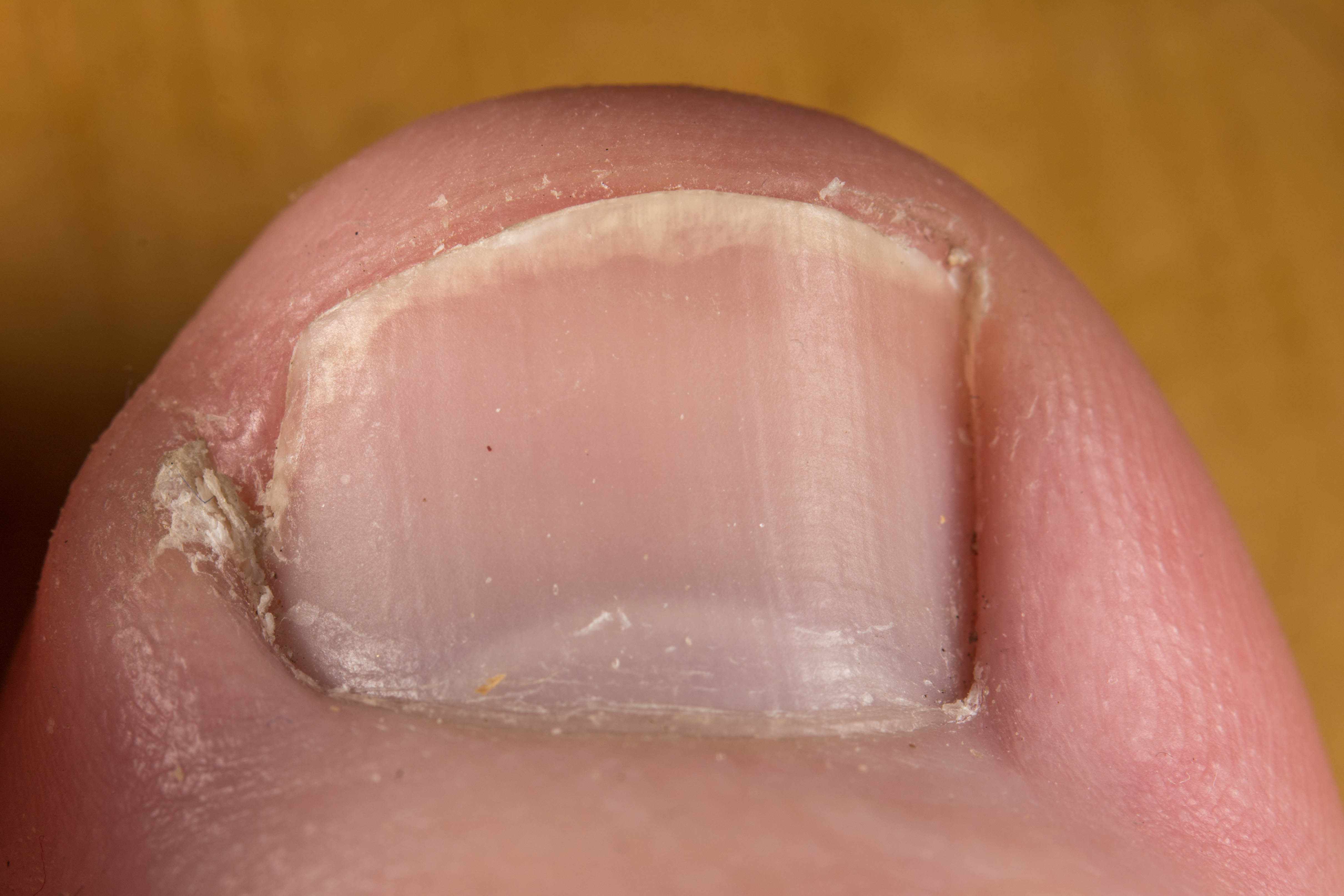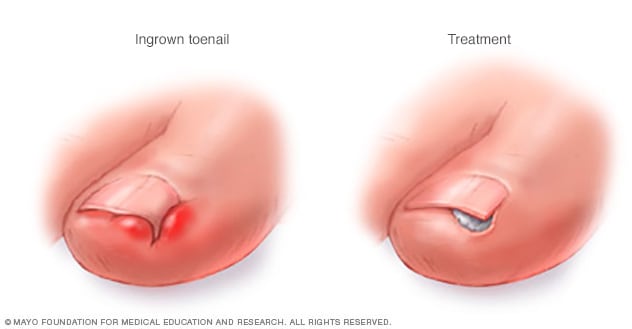-
Featured News
Home Remedies: Complications of ingrown toenails

Ingrown toenails are a common condition in which the corner or side of a toenail grows into the soft flesh. The result is pain, redness, swelling and, sometimes, an infection. Ingrown toenails usually affect your big toe.
Often you can take care of ingrown toenails on your own. If the pain is severe or spreading, your doctor can take steps to relieve your discomfort and help you avoid complications of ingrown toenails.
If you have diabetes or another condition that causes poor blood flow to your feet, you're at greater risk of complications of ingrown toenails.
You can treat most ingrown toenails at home. Here's how:
- Soak your feet in warm water. Do this for 15 to 20 minutes three to four times a day. Soaking reduces swelling and relieves tenderness.
- Place cotton or dental floss under your toenail. After each soaking, put fresh bits of cotton or waxed dental floss under the ingrown edge. This will help the nail grow above the skin edge.
- Apply antibiotic cream. Put antibiotic ointment on the tender area and bandage the toe.
- Choose sensible footwear. Consider wearing open-toed shoes or sandals until your toe feels better.
- Take pain relievers. Over-the-counter pain relievers such as acetaminophen (Tylenol, others), ibuprofen (Advil, Motrin IB, others) and naproxen sodium (Aleve) may help ease the toe pain.
To help prevent an ingrown toenail:
- Trim your toenails straight across. Don't curve your nails to match the shape of the front of your toe. If you have your toenails done at a salon, be sure to tell your pedicurist to trim your nails straight across. If you have a condition that causes poor blood flow to your feet and you can't trim your nails, see a podiatrist regularly to have your nails trimmed.
- Keep toenails at a moderate length. Trim toenails so they're even with the tips of your toes. If you trim your toenails too short, the pressure from your shoes on your toes may direct a nail to grow into the tissue.
- Wear shoes that fit properly. Shoes that place too much pressure on your toes or pinch them may cause a nail to grow into surrounding tissue. If you have nerve damage to your feet, you may not be able to sense if your shoes fit too tightly. Take care to buy and wear properly fitted shoes, preferably from a shoe store specializing in fitting shoes for people with foot problems.
- Wear protective footwear. If your work puts you at risk of injuring your toes, wear protective footwear, such as steel-toed shoes.
- Check your feet. If you have diabetes, check your feet daily for signs of ingrown toenails or other foot problems.

If home remedies haven't helped your ingrown toenail, your doctor may recommend:
- Lifting the nail. For a slightly ingrown nail (redness and pain but no pus), your doctor may carefully lift the ingrowing nail edge and place cotton, dental floss or a splint under it. This separates the nail from the overlying skin and helps the nail grow above the skin edge. At home, you'll need to soak the toe and replace the material daily.
- Partially removing the nail. For a more severe ingrown toenail (redness, pain and pus), your doctor may trim or remove the ingrown portion of the nail. Before this procedure, your doctor may temporarily numb your toe by injecting it with an anesthetic.
- Removing the nail and tissue. If you have the problem repeatedly on the same toe, your doctor may suggest removing a portion of the nail along with the underlying tissue (nail bed). This procedure may prevent that part of your nail from growing back. Your doctor will use a chemical, a laser or other methods.
Your doctor may also recommend using topical or oral antibiotics, especially if the toe is infected or at risk of becoming infected.







